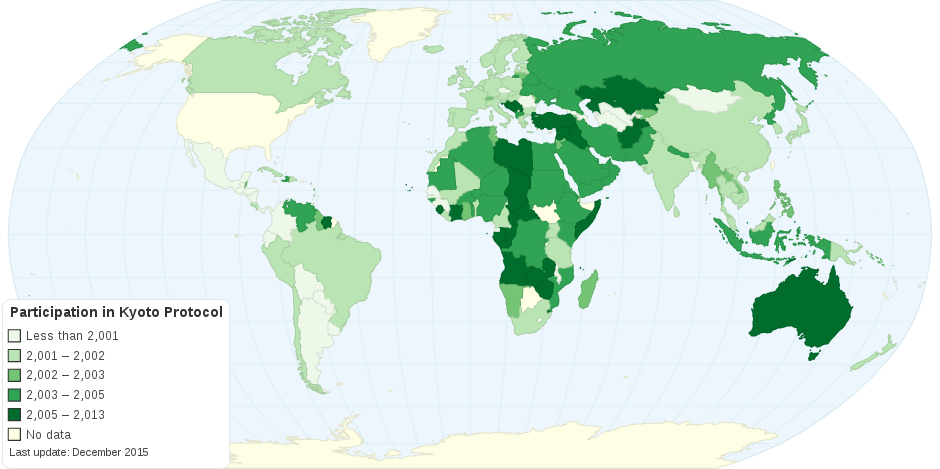As delegates from the COP25 UN climate talks make their way home from Madrid, attention has focused on one of the core sticking points – the issue of surplus emissions permits leftover from the Kyoto protocol.
What is the Kyoto Protocol?
The Kyoto Protocol is an agreement between participating United Nations countries, which makes binding commitments to parties for emissions reduction targets. It was adopted in Kyoto, Japan, on 11 December 1997 and became effective in 2005 and required parties to measure, report and take action to reduce emissions. The Paris Agreement coming into force in 2016 effectively supercedes the Kyoto Protocol with wider acceptance from 55 parties or 55% of the world’s GHG emissions.
A small group of countries, including Australia, fought to protect their favourable position on emissions abatement, created under the Kyoto Protocol through soft targets and convenient accounting loopholes. No agreement was reached, leaving negotiators to reconsider the issue at the next round of talks in Glasgow in late 2020.
Meanwhile, the the scale of emissions reductions that could be put as risk if countries conceded to the demands that surplus Kyoto units be carried over into the Paris Agreement should be great cause for concern.
Analysis from Climate Analytics estimates that if the surplus units were carried over into the Paris Agreement, and used against countries 2030 emissions reduction pledges, they could reduce global ambition by as much as 25 per cent.
“Efforts to seek recognition under the Paris Agreement for these historical artifacts, in the guise of or repackaged as ‘over-achievement’, in an effort to minimise future mitigation efforts required, would be contradictory to the goals and principles of the Paris Agreement, to which Australia has itself subscribed as a Party,” ClimateAnalytics said.
According to the OECD, further risks include but are not limited to: a lack of ability to generate additional emissions reductions past the Kyoto mechanism, a reduction in incentive to invest in new projects given the glut of existing credits in the market, and double counting of credits between the recipient and host countries.
